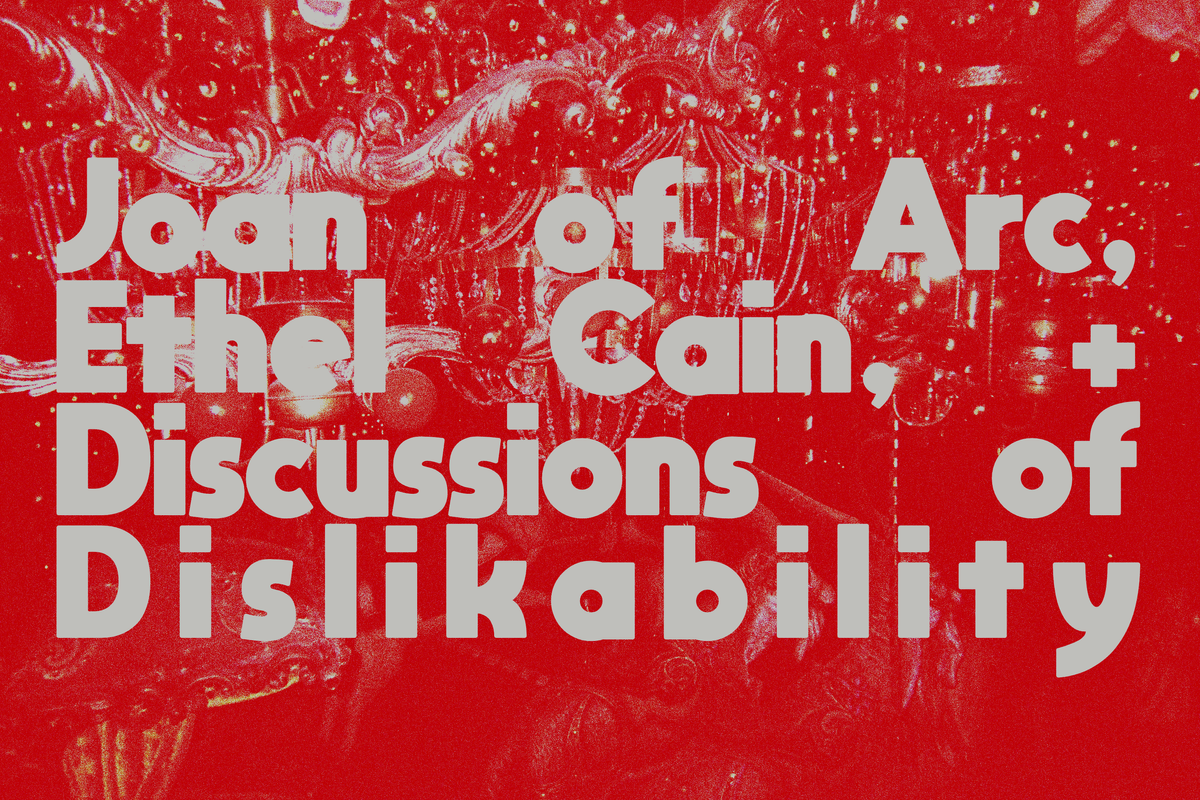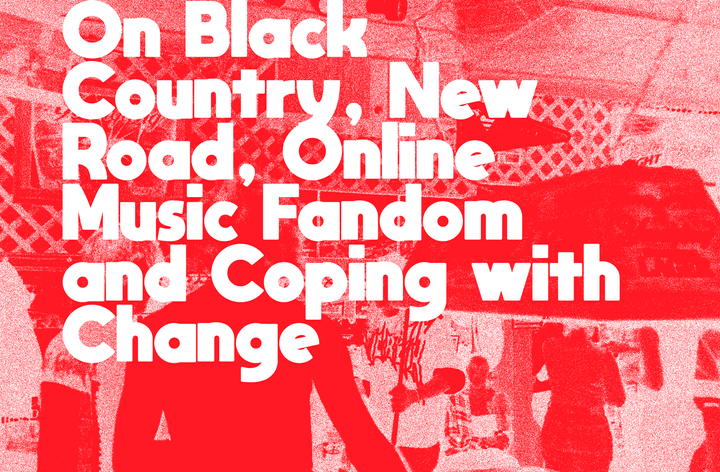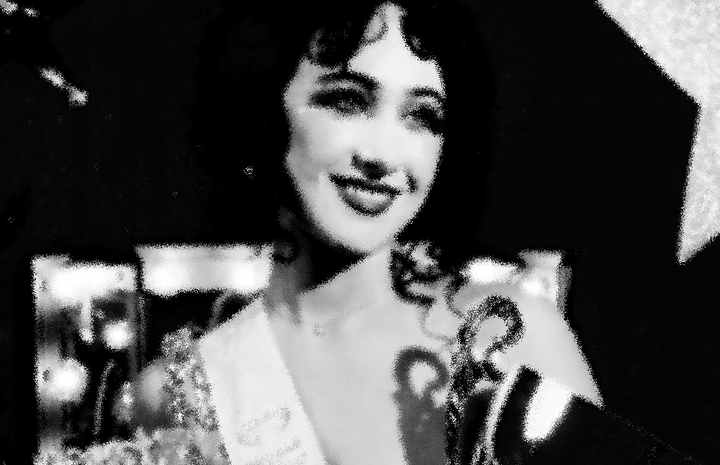Joan of Arc, Ethel Cain & Discussions of Dislikability
A discussion on discussions. Vintage Miranda Reinert blogging.

Yesterday a friend of mine sent me a DM sharing an article about Joan of Arc's fourth album, The Gap. I told him I was scared to read it. I hold few things precious when it comes to my own personal taste, but Joan of Arc is one. Not in the sense that I take issue with people who don't like the music, but definitely in the sense that I find a lot to disagree with in the way many people talk about Joan of Arc.
The Gap – which turns 25 years old this year – is not a JoA album I'm particularly fond of. I'd put it firmly middle of the pack. I like it more than Flowers and less than So Much Staying Alive and Lovelessness, but I've never tried to rank their records and I never will. The Gap is an album that, to me, is more of a talking point for people older than me with decades old beef with old Pitchfork scores – it got a 1.9 – and a conduit to talk about the more notorious confrontational aspects of the band.
Between that and the release of the new Ethel Cain album also this week, I've been thinking a lot about the narrative of intentional dislikability and how people talk about artists who choose to subvert what people like them for best. Ethel Cain's new album doubles down on drone and turns away from alt pop after Hayden Anhedönia publicly struggled with the fame brought on by the success of Preacher's Daughter. Joan of Arc fought the Kinsella surname as a synonym for emo, not with the frequent emo band move of increasing accessibility with a pivot into pop, but instead with albums that explored the challenging and alienating aspects of Tim Kinsella's songwriting.
The reality of both Perverts and The Gap are that they don't exist as only – or even mainly as – challenges against the things before them. There is a lot of Preacher's Daughter to be found in Perverts. It's not like that album is never challenging or secretive about its creators interests in sparseness or drone. Joan of Arc on the whole has a lot more in common with Tim Kinsella's broader works than people want to admit– even The Gap. The Gap is often idiosyncratic in the structure, but it's not like there aren't calm – even beautiful! – passages. It just depends on what you want to see.
The narrative of an album being intentionally alienating is so often more interested in presenting an easy and compelling story than being complete and contextualized. It's easier to say an artist Completely Reinvented Their Sound And It's A FUCK YOU To The Casuals than it is to write something interesting about a piece of art where that is a piece of it. This is a discussion interested in dichotomies, both real and invented, but when an artist you like makes a big artistic pivot the most interesting thing to be found is not whether you have the brain to withstand a nebulous "challenge." Pivots are fun because it provides an opportunity to understand why you like what you like. I believe all art made by the same person will be in close conversation with the art that came before it. It's sort of a "no matter where you go, there you are" situation. There is a lot lost when the narrative of difference takes precedence over what the content of the art says about the artist's work.
This whole thing is just one part of the issue I have with the way people talk about taste when it centers around difficulty as the highest level of virtue. There is a performative nature to discussing taste in art – even for those who allege to be against perceived "pretentiousness." There is intention in that point of view. There is a performative nature to that as much as there is in what is on its surface pretentious taste. Difficult, alienating, challenging music is not inherently compelling to me. It sucks and is boring to read something that wants you to believe it is.
To pivot away from accessibility is a necessary and beautiful artistic statement on art and expectation, but it's a less compelling as a tool to discuss the taste of people who listen to an artist for reasons consistent with their personal taste. It's like telling someone they don't have personal taste because they don't feel comfortable in a really maximalist style outfit. That's a misunderstanding of personal taste. We don't all want to wear the Chopova Lowena skirt. That's not a failure of personal style.
The most interesting thing to discuss about Joan of Arc is the presence of a very particular perspective on art and culture that permeates a huge discography. I'm compelled by Ethel Cain's distaste for fame because it does say something distinct about fame in the modern era. But that's also what I think is interesting about all music at the sonic fringes from true ambient music to extreme genres of metal. These things are inherently a rebellion against art as a money maker through traditional understandings of what sells. It's less interesting to me that Tim Kinsella was combative with music writers than it is to consider even the longevity of Joan of Arc compared to his other projects. It's less interesting to discuss Ethel Cain's lore than it is to understand the veins that exist and connect throughout her music.
I think, as we live in a world that is increasingly dominated by algorithms and people trying to sell artists on methods outside of the merits of the art to find success, it is brave and cool to make art that is only interested in being what it is. That's not a reason to like the music, but that's kind of the point. The point is the potential for real alienation, not the discussion of if certain audiences will be smart or adventurous enough to get it. The point is to understand what is actually going on. That's the tough part about conversations about taste.
Do you actually want to discuss the way the art works or do you just want to be affirmed in your own notions?

Miranda Reinert is a music adjacent writer, zine maker, podcaster and law school drop out based in Chicago. Follow me on Twitter or Instagram or Bluesky for more reminiscing on the year: @mirandareinert. This blog does have a paid option and I would so appreciate any money you would be willing to throw me! You may also send me small bits of money at @miranda-reinert on venmo/on Paypal if you want. As always, thanks for reading!




Comments ()